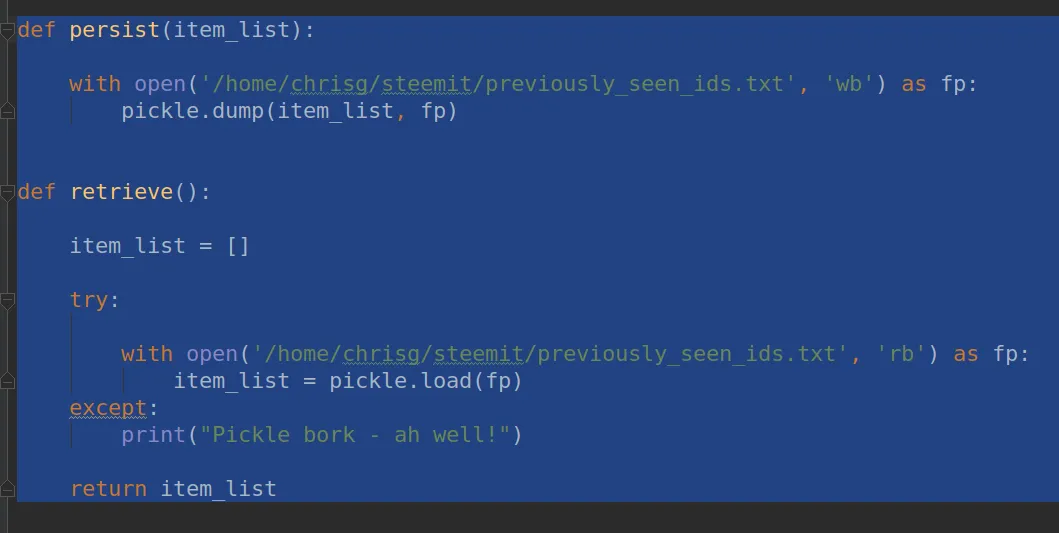
Back when I was learning C and C++, I often reused a piece of code that would write data from memory to a file and read it back again to persist state.
Just dump my struct to a file.
Any time the software needed to restart - say after a system crash - it could just keep on trugging along as if not much had happened :)
It is a very long time since I coded in C++ (outside of Arduino and C#) but that concept stuck with me.
I had no idea there was a similar functionality in Python until today (yes, I am late to the party!)
Introducing Pickle
Now if this is not news to you I do not blame you for rolling your eyes, but if you haven't seen Pickle then you are in for a treat.
Start with, as you would expect, importing pickle.
Then use the following code to persist and recall your data:
def persist(item_list):
with open('my_list.txt', 'wb') as fp:
pickle.dump(item_list, fp)
Supply this function with your array/list.
And then to get it back ...
def retrieve():
item_list = []
try:
with open('my_list.txt', 'rb') as fp:
item_list = pickle.load(fp)
except:
print("Pickle bork - ah well!")
return item_list
So what happens is your array or list goes from memory to a file on your file system, and then you can reverse the process :)
Obviously the file needs to exist, so just use the shell command as follows:
touch my_list.txt
(this will create a placeholder file ready for your script to run)
Neat, eh?